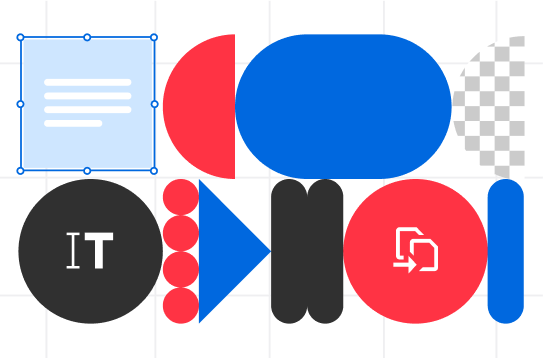
The healthcare industry is experiencing significant changes thanks to the integration of digital technologies. This digital transformation is redefining how healthcare services are delivered, managed, and experienced. The goal of this shift is to improve patient outcomes, boost efficiency, and cut costs.
In this article, we’ll dive into the different aspects of healthcare digital transformation, paying special attention to the role of PDF tools. Often overlooked, these tools are essential for enhancing efficiency and ensuring smooth operations within healthcare organizations.
Digital Evolution in Healthcare
Digital transformation in healthcare is a pivotal change in how healthcare services are delivered and managed. This process involves integrating digital technologies into every aspect of healthcare, from patient care to administrative tasks, to boost efficiency, improve patient outcomes, and reduce operational costs.
In the past decade, healthcare has seen a surge in digital transformation driven by technological advancements and the growing demand for better services. The adoption of electronic health records (EHRs), telemedicine, mobile health apps, and advanced data analytics are key examples of how digital technologies are reshaping the industry. These innovations allow healthcare providers to deliver more personalized, accurate, and timely care.
The COVID-19 pandemic has further accelerated this shift. The need for remote consultations, contactless services, and effective data management highlighted the critical role of digital tools in maintaining continuity of care during a crisis. Consequently, many healthcare organizations have adopted digital solutions to enhance their resilience and adaptability in these challenging times.
Benefits of Digital Transformation in Healthcare
Improved Patient Care: Digital tools like Electronic Health Records (EHRs) and telemedicine platforms enhance communication between patients and healthcare providers. This leads to more accurate diagnoses and personalized treatment plans.
Increased Efficiency: Automating administrative tasks, such as appointment scheduling and billing, eases the workload of healthcare staff, allowing them to concentrate more on patient care.
Enhanced Data Management: With advanced data analytics and machine learning algorithms, large volumes of healthcare data can be analyzed more effectively. This improves decision-making and provides predictive insights.
Cost Reduction: Embracing digital transformation can result in significant cost savings. Streamlining operations, reducing paperwork, and minimizing errors all contribute to lower expenses.
Greater Accessibility: Telemedicine services make healthcare more accessible, especially for patients in remote or underserved areas.
Utilizing PDF Tools in Digital Healthcare
One often overlooked aspect of digital transformation in healthcare is the utilization of PDF tools. In the healthcare industry, PDFs are indispensable. They may be used for a wide range of tasks, including creating billing statements, sharing research findings, and keeping patient forms and medical information. Because of their adaptability, security features, and ease of use, they are the best option for managing and sharing important medical data.
Benefits of PDF Tools in Healthcare
Standardization: PDFs offer a standardized format for documents, ensuring consistency in how information is presented and shared across different platforms and devices.
Security: PDF tools often come equipped with security features like encryption, password protection, and digital signatures, crucial for maintaining the confidentiality and integrity of sensitive healthcare data.
Accessibility: PDFs are widely compatible with various devices and operating systems, making it a breeze for healthcare professionals and patients to access important documents anytime, anywhere.
Searchability: Advanced PDF tools enable searchable text within documents, making it easy to find specific information quickly, vital in the fast-paced healthcare environment.
Integration with EHR Systems: Many PDF tools seamlessly integrate with electronic health record systems, simplifying data exchange and reducing the need for manual data entry.
Integrating PDF Tools into Digital Healthcare Workflows
Incorporating PDF tools into healthcare workflows demands thorough planning and execution. Here are strategies to seamlessly integrate these tools into your healthcare organization:
1.Integration with Electronic Health Records (EHR):
- Automated Document Conversion: Integrate PDF tools for effortless conversion of scanned documents and lab reports into searchable PDFs, ensuring seamless access and secure management within the EHR system.
- Secure Sharing and Collaboration: Utilize PDF tools with security features for encrypted email attachments and secure file transfers, enabling safe exchange of patient information among healthcare providers and stakeholders.
- Annotation and Digital Signatures: Empower healthcare professionals to annotate PDFs directly within the EHR system, facilitating note-taking, highlighting key information, and electronically signing documents to streamline workflows.
2.Enhancing Patient Engagement and Communication:
- Patient Portals: Integrate PDF tools into patient portals for secure access to medical records, test results, and treatment plans, enabling patients to download, print, or share documents as needed.
- Forms and Consent Management: Simplify patient intake and consent processes with fillable PDF forms, reducing manual data entry and errors.
- Educational Materials: Provide patients with educational materials in PDF format, enriched with interactive elements like hyperlinks and embedded videos to enhance understanding and engagement.
3.Streamlining Administrative and Billing Processes:
- Automated Workflows: Employ PDF tools to automate administrative tasks such as invoice generation and claims processing, improving efficiency and reducing errors.
- Document Archiving: Ensure long-term accessibility of important documents by archiving them in PDF format, maintaining integrity over time.
- Compliance and Auditing: Utilize PDF tools with audit trail features to track document access and modifications, ensuring compliance with regulatory requirements and fostering transparency.
4.Facilitating Research and Collaboration:
- Literature Reviews: Organize and annotate research materials with PDF tools, leveraging advanced search and indexing capabilities for efficient information retrieval.
- Collaborative Projects: Foster teamwork with PDF tools supporting real-time editing, commenting, and version control, facilitating seamless collaboration on research documents.
- Grant Proposals and Publications: Prepare grant proposals and research papers in PDF format, meeting formatting requirements for funding agencies and academic journals.
For all these needs and more, Soda PDF offers a wide range of PDF tools that can significantly enhance the efficiency and effectiveness of healthcare operations.
Conclusion
Digital transformation within the healthcare sector is a dynamic, ongoing process that demands the integration of various digital tools and technologies. PDF tools are instrumental in this transformation, providing secure, efficient, and standardized document management solutions. By leveraging the advantages of PDF tools, healthcare organizations can simplify their workflows, enhance patient care, and achieve greater operational efficiency. As the healthcare industry continues to evolve, the adoption of digital tools like PDFs will be crucial for remaining competitive and delivering high-quality care in an increasingly digital era.



